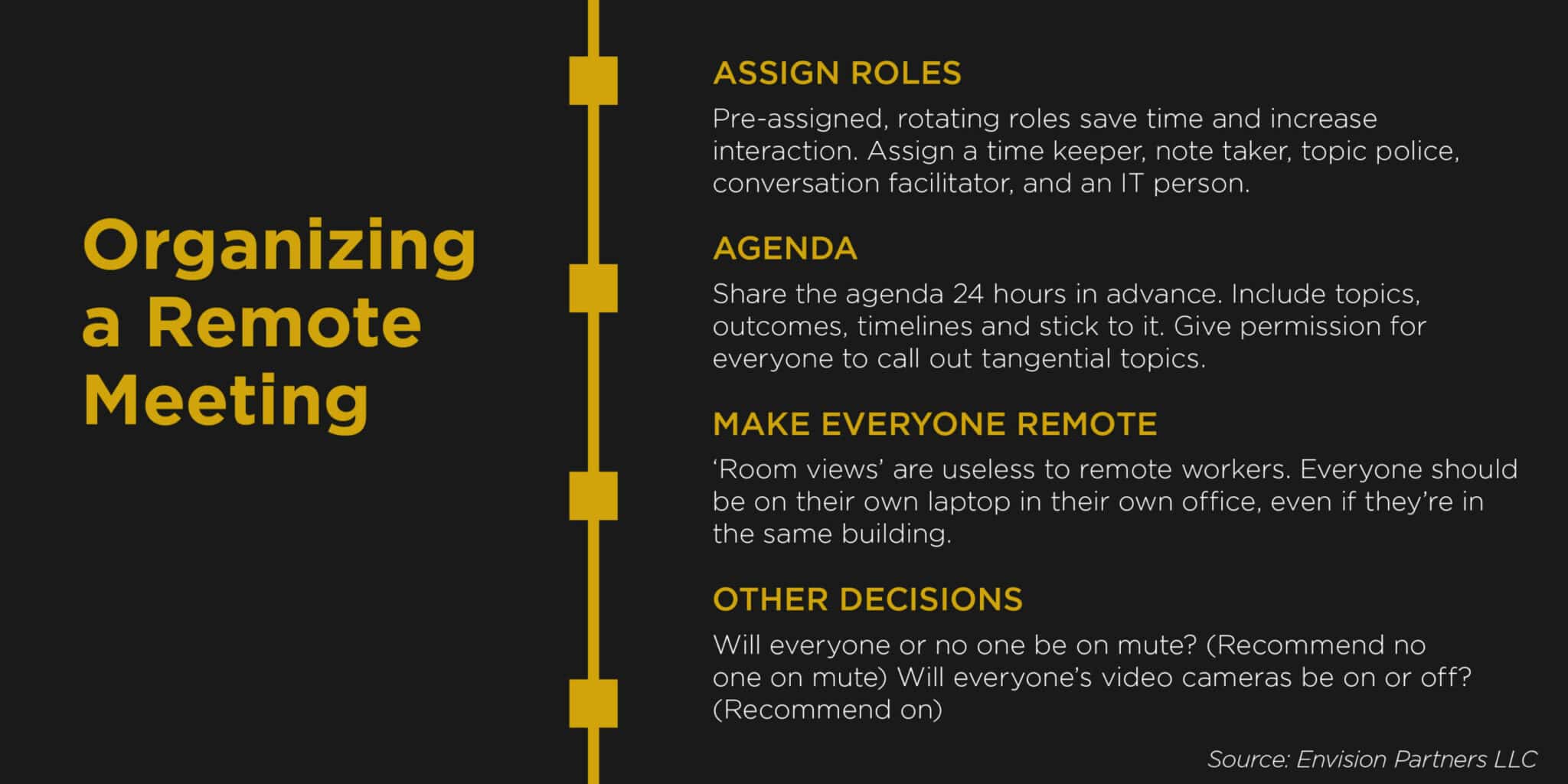The seed industry is global. I cannot tell you how many times during my seed career I’ve talked about the global nature of the seed industry. Sometimes it was pointing out that a seed or its genetics cross up to six borders before being planted by a farmer. Other times, its comparing passport stamps with fellow road warriors on the way back to the airport after attending a congress or visiting a test plot.
Working in a global industry means we spend a lot of time on remote meetings. Over time, hopefully you’ve picked up a few best practices to improve the productivity of your meetings. For this article, I’ve teamed up with PRO Advisor Jonathan Shaver of Envision Partners, LLC to share some best practices to help improve your meetings. If you have questions how now to implement these policies in your business, reach out to Jonathan through PRO’s Advisors Page.
Jonathan points out that there are special etiquette and protocols that should be in place to maximize the outcomes of long-distance interactions. In-person meetings are hard enough, cross-cultural meetings present their own difficulties, and time zones add further challenges. Technology can make this all possible, yet can present the biggest obstacles.
1. Meeting format
Think about your meeting. What technology do you need to make it engaging and effective? There are many different options.
Which of the following tools do you need?
- Audio
- Video conferencing
- Screen sharing capabilities
- Document sharing and editing (like Google Docs)
- Services that work from a computer or a smartphone
- A recording of the session
- Whiteboard application for sharing real time graphics
- WeChat which is the most reliable for team members in China
Once you know which of these features you need, then it will be easier to select the right service to use.
*PRO Tip: For audio only meetings, consider still using the video platform with headshots. Seeing someone’s face improves the quality of conversations and increases in-meeting attention and post-meeting accountability.

2. Invest in remote meetings
Teleconferencing services are an inexpensive way to bring a team together. However, it might not be free. We all understand the importance of investing in high quality seed for a farmer to be successful. Think of meeting equipment as an important input in the success of a meeting.
If remote meetings are a regular part of the business, then invest in good headsets and video cameras for all team members. Pay for a meeting service. There are many conferencing services available and they have different price points and pros and cons. Don’t go with a free version just to get kicked off the call after 40 minutes because the time limit is up. And don’t use a different platform for every call. It’s confusing for attendees to know which number or service to call into and could create delays. Finally, make sure there is enough bandwidth to support all the applications and services needed to support the call or meeting.
In addition to investing money in teleconferencing services, also invest time. Everyone, especially the presenter, should practice using the tools before the meeting. Make sure the presenter knows how to share his screen and that all the participants know how to log in and that their internet connections are strong enough to participate in the meeting.
3. Facilitating meetings
Jonathan recommends assigning roles to participants before the call starts. These jobs require people to pay attention and stay engaged throughout the call.
Roles:
- Timekeeper: this person makes the times on the agenda are adhered to
- Note taker: records minutes from the meeting (in real time or shared afterward) and take attendance
- Topic police: this person helps keep the conversation moving forward and prevent off-topic discussions
- Conversation facilitator: makes sure everyone gets time to speak
- IT person: this person arrives early and troubleshoots
The roles are rotated around the team and assigned prior to the start of the meeting.

4. Agendas
All meetings need agendas to be effective. They are most beneficial when they are shared 24 hours before the meeting. Agendas should include the topic that is being covered, the purpose of the meeting, the outcome desired, who is responsible for what, and suggested times.
When all this information is included in the agenda it helps the meeting move forward in a productive manor. Tangents will inevitably arise. When they do, the agenda will help tell the group if they can quickly be discussed and put to bed now or if another meeting needs to be scheduled to dive deeper into this topic. Agendas also show the team what topics are important and need to be covered that day. With all the issues laid out before hand and suggested time, the team is aware of the priorities and everything that must be covered.
5. Consistency
Jonathan recommends as much consistency among attendees as possible. Should everyone be on mute or not? Should everyone use video conferencing or just audio? With online platforms that have both video and audio services, I find that I’m never quite aligned with the rest of the team.
Recently, I called in for a two-hour meeting over lunch. I was on video and super self-conscious about eating my grapes in front of the camera. The rest of the people dialed in, so their meals weren’t on display. Since then, I take the audio choice. This week, I meet with a new client. It was a Zoom call, so I decide to dial in. He was sitting in front of a Hawaii backdrop. I offered to switch to video, but I was very unprepared for the video session and a bit self-conscious. My takeaway: Jonathan is right, everyone is more comfortable when we are all on the same page.
It’s not just video conferencing or dial-in numbers. Jonathan pushes teams to go one step further. If some employees or participants are remote, then everyone should call in from their own computer in their own office.
It’s not just video conferencing or dial-in numbers. Jonathan pushes teams to go one step further. If some employees or participants are remote, then everyone should call in from their own computer in their own office. If you have three salespeople on the road calling in for the weekly status update and six in the office, the people in the office should ‚Äúcall in‚Äù too.
The benefit of this tactic is that there are no side conversations that are easy for people in the room to follow, but sometime inaudible on the phone. Also, it forces speakers to explain everything with their words. When people are in the same room, they tend to write or use body language to explain ideas or drive a point home. All of this context is lost on the people dialing in. To ensure the highest level of engagement and understanding, everyone should call in.
Final Thoughts
One of the first lessons I learned working internationally was the power of a good interpreter. During my first official meeting, the visiting delegation brought an interpreter with them. Halfway through the meeting, the room erupted in yelling. People were interrupting the meeting and angerly interrupting the translator. It was a mess. Since then, I’m very picky when selecting an interpreter.
A good translator is important because he or she makes sure both sides understand each other. Great translators don’t just translate words back and forth, they also understand meaning and can convey a deeper message.
In person, we have a lot of tools to translate the ideas in our heads into useful shared information. We use body language and other tools to convey our message. Remotely, communication and ideas are harder to share. Novel and nuanced ideas are far less effective. Better technology helps reduce challenges that arise during virtual meetings. They act like a great translator or a great meeting facilitator. Jonathan’s final PRO tip is to always share meeting materials before the meeting starts. Give people time to read and digest the information. Then during the meeting, the team can focus on asking questions, giving feedback, and making decisions.













